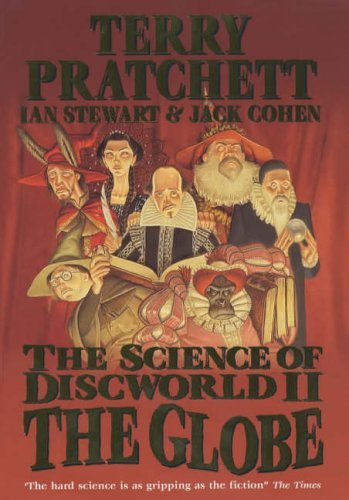What do you think?
Rate this book


384 pages, Hardcover
First published January 1, 2002

This book repeats a technique used in The Science of Discworld I - two stories in parallel. Discworld is a mirror of Roundworld. The wizards used the computer Hex to construct Roundworld in SoD I. They were shocked at the many differences. Shape was only a beginning. They were confronted with the many ways in which life evolved on Roundworld. They were also forced to reflect on how illogical it seemed for living things to struggle for survival, only to be snuffed out by natural forces. In this sequel, the most advanced life form is going to be confronted with an extinction threat noted in the first book. How to deal with it? It turns out that the best solution is to ally with a great evil force.
Humanity has a strange and illogical heritage, this book tells us. As our forebears learned to cope with changing conditions on the African savannah [or on lake shores or even in the sea] they learned to stand upright, to grasp tools, and to think. This has always seemed like a long, continuous progression of small improvements over time - a process in the best Darwinian gradualist sense. This trio of authors reminds us that this picture is false for humans. After a good start, our ancestors simply halted in place, keeping social, mental and technological progress at bay. The "pause" went on for a hundred millennia. At some point about fifty thousand years ago, all that changed. We went from the "standing ape" to become "the storytelling ape". Thinking and speaking resulted in story-telling.
In trying to understand ourselves and our surroundings, Pratchett and his colleagues see humans as inventing stories for explanations of nature's mysteries. Magic, allied with the element "narrativium", runs the Discworld. On the Roundworld, magic has to be invented. Narratives are the means to bring it about and spread it around. Every human society forges its own stories which are imparted to children as "Make-A-Human Kits". Each society creates explanations which become legends which become religions as one example. While we might dispute whether we've "progressed" argue the authors, there's no question that once the process started, humans changed rapidly resulting in what we see around us today. This "advance", they argue, was not inevitable. While we may not yet understand what prompted this change, we can list alternatives and reject the impossible or implausible. That's why the Discworld parallel story comprises part of this book. It teaches you how to recognise the difference.
To long-standing Discworld fans, this book will be a serious challenge. Unlike the "laugh per page" of Pratchett's other works, he and his colleagues confront the most serious of issues: "where do we come from?" and "where are we going?". Cohen and Stewart, who have dealt these questions elsewhere, and Terry Pratchett, who posits them with every book, have produced a significant contribution in attempting an answer. The use of the parallel story line offers great opportunities for the reader to "step outside the box" and consider life and beliefs from a detached view. Pratchett has long confronted us with ourselves. Adding Cohen and Stewart's scientific and cognitive abilities to his imagination results in a compelling and informative read. [stephen a. haines - Ottawa, Canada]